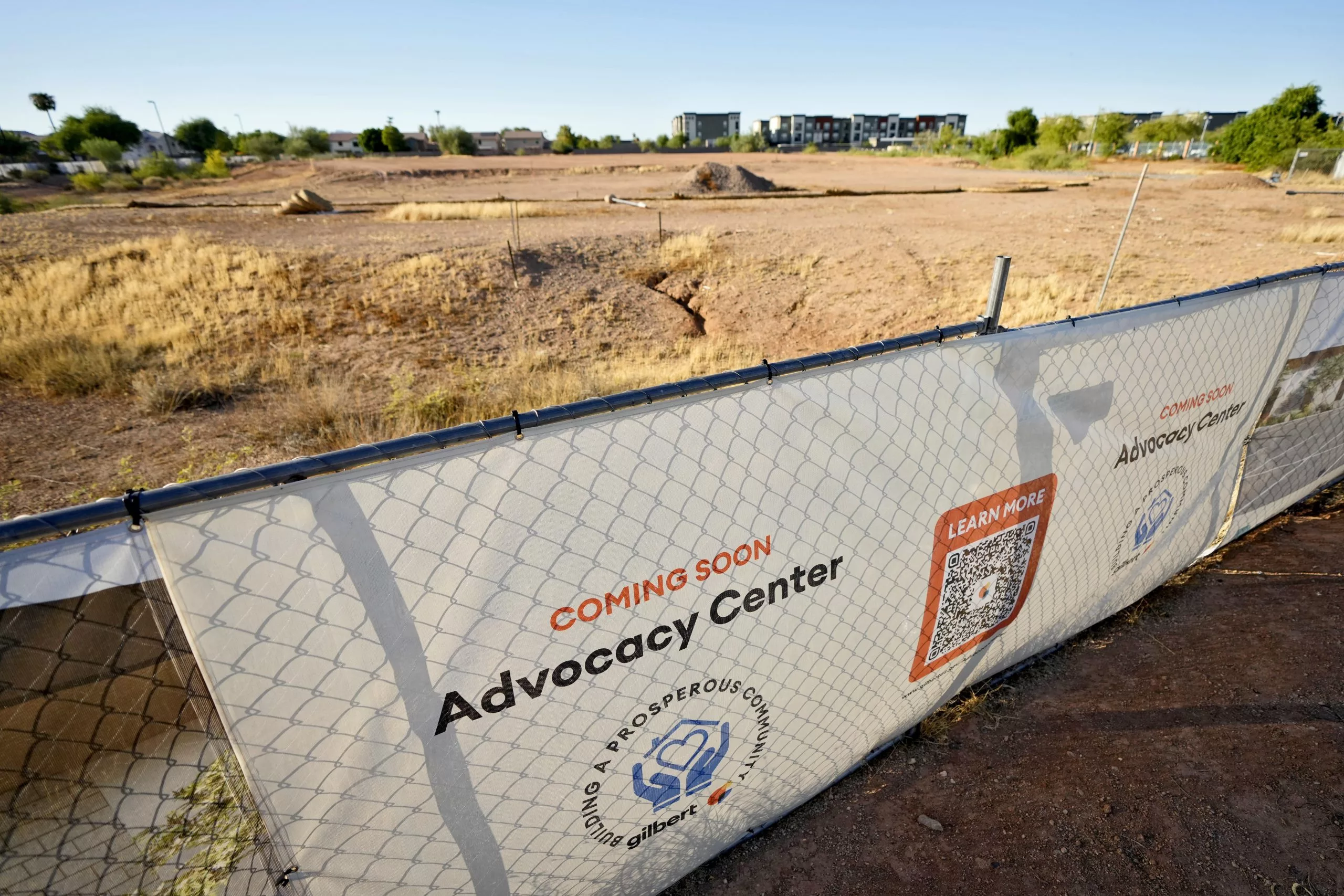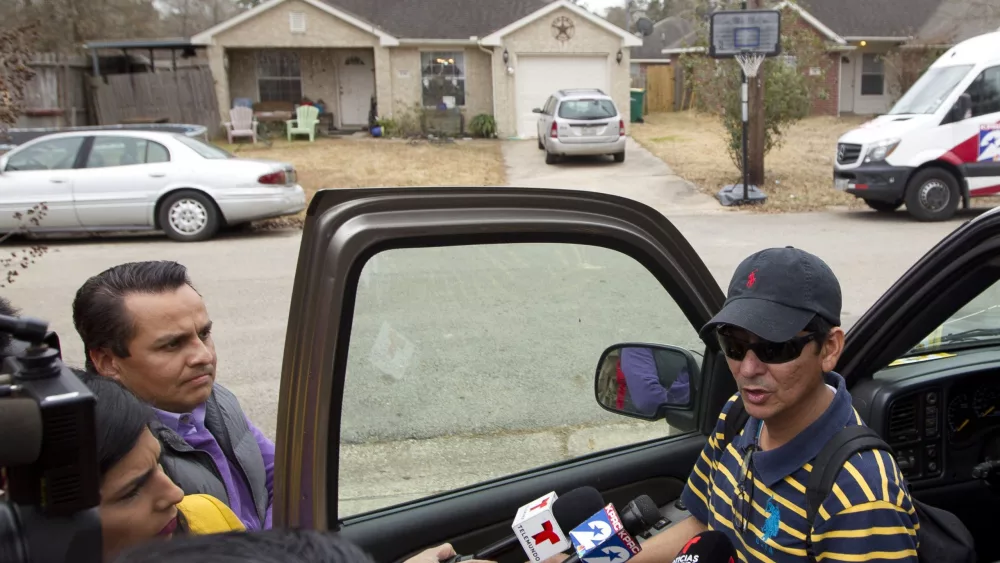From the looks of it, the Phoenix suburb of Gilbert hasn’t done too much with the $24 million it received in federal pandemic aid.
The site where it plans to spend most of the money for a crime victims center remains an empty plot of dirt. And just one-quarter of its funds are obligated for projects, according to the most recent federal data. But town officials say contracts should be in place soon to spend the rest of it.
For Gilbert and thousands of other local governments across the U.S., the clock is ticking to use their share of $350 billion in COVID-19 relief funds approved by Congress and President Joe Biden in 2021. Governments must obligate all their American Rescue Plan funds for specific projects by the end of this year or else return the rest to the U.S. Treasury.
About 80% of all funds had been obligated as of March, according to the most recent data reported to the Treasury by more than 26,500 local, state and territorial governments. That’s right on pace to finish in time.
But some governments appear to have a lot more work to do than others.
About one in five governments reported obligating less than half their funds as of this spring, according to an Associated Press analysis, and about 3,500 had obligated less than 25%. That includes 2,260 governments that reported no projects, leaving it unclear whether they had any plans for the money. Some of them may have already used the money but failed to describe the purpose to the federal government.
The Treasury Department said it’s doing extensive outreach to help communities understand their reporting requirements.
From the beginning, the American Rescue Plan faced criticism from some Republicans and government watchdog groups for allowing unnecessary and excessive spending, including on things hardly connected to the coronavirus pandemic. But some state and local officials say the funding has allowed them to undertake long-sought projects they couldn’t otherwise have afforded.
Gilbert officials decided to devote almost all their American Rescue Plan funds to a single project — a $43 million facility where victims of sexual assault, child abuse and domestic violence can undergo forensic exams and interviews needed for prosecution while also receiving counseling and therapy services. Officials identified a need for the center several years before the pandemic but didn’t have a funding source. The federal money will cover a little over half the cost, with the rest coming from Gilbert’s general funds.
The goal is to provide a “comprehensive wrap-around center where a victim of interpersonal violence can come and undergo a really safe and healing journey,” Assistant Town Manager Leah Rhineheimer said. It’s “one of the most meaningful projects the town could undertake.”
Town officials hope to award a construction contract this fall — a step that would satisfy the Treasury’s requirement to obligate the money by year’s end — though actual construction wouldn’t start until next year, Gilbert Police Chief Michael Soelberg said.
Under Treasury rules, an obligation generally requires a government to place an order for services or property, enter into a contract or award a grant to another entity. Governments that meet the obligation deadline then face a second deadline to finish spending the funds by the end of 2026.
Other local officials interviewed by the AP described a mixture of reasons why they hadn’t reported obligating much of their funds. Some said they didn’t think they needed to detail how the money was used because they categorized it as a replacement for local revenues lost during the pandemic’s economic downturn. Others described challenges in figuring out what to do with it.
“There’s no question that some of this money was not needed and it’s being spent wastefully,” said Tom Schatz, president of Citizens Against Government Waste, a Washington, D.C.-based nonprofit.
The Detroit suburb of Dearborn Heights, which received more than $24 million, listed just one obligation on its spring Treasury report — about $79,000 for administrative expenses to select and implement projects funded with the federal aid.
Dearborn Heights Mayor Bill Bazzi said the federal funding arrived shortly after he took office, making it challenging to simultaneously “get a grasp of what the city needs” and assemble staff to administer it. The city plans to use the money for stormwater, sewer and water main projects, among other things, and should have most of it obligated soon, Bazzi said.
Progress was delayed because “we had to go through a tedious process” before putting projects out for bids, he said.
As the federal deadline nears, some states and local governments are making backup plans to ensure they use all the money.
This spring, Missouri told the Treasury it had obligated 99% of its nearly $2.7 billion allotment. But some projects have fallen through or appear unlikely to need their full funding.
So lawmakers and Republican Gov. Mike Parson approved a revised spending plan that eliminated $49 million intended for COVID-19 response efforts and $16 million to remodel an old mental health facility for use in a sex offender rehabilitation program, among other things. Those funds were reallocated to dozens of new projects, including a college engineering building and a health care worker training program.
The Missouri Legislature also budgeted $150 million of American Rescue Plan funds for K-12 public schools as a fallback option if other projects don’t get moving. Several lawmakers in the conservative Freedom Caucus voted no, suggesting the federal pandemic aid was driving up federal debt and inflation.
“I’m fine if we were to give it back,” Republican state Sen. Rick Brattin, the Freedom Caucus chairman, told the AP. “We could at least hold our head high and say that we didn’t continue to contribute to the financial collapse of the American dollar.”
Missouri Senate Appropriations Committee Chairman Lincoln Hough, a Republican, said lawmakers don’t have to agree with the federal funding to nonetheless use it.
“When we have it, in my opinion, we should invest in our communities and invest in our future workforce,” Hough said.
Facing the prospect that some of Connecticut’s $2.8 billion American Rescue Plan allotment could go unused, the state General Assembly this year reallocated $365 million to new purposes. The legislation also laid out a backup plan, directing Democratic Gov. Ned Lamont’s administration to reallocate any funds that appear unlikely to be obligated as of Oct. 15 to instead go toward budget shortfalls and higher education.
The city of New Orleans reported obligating 55% of its $387.5 million federal allotment as of this spring. But it’s been moving quickly to use the money. As of September, 86% has been obligated, New Orleans Chief Administrative Officer Gilbert Montano said. During the summer, the City Council shifted pandemic relief funds away from a couple of projects that faced timing questions to instead fund homeless shelters and clean up illegal dumps. Other slower-moving projects are on a watch list for potential reallocations before year’s end.
“We’re not going to give any of that money back,” Montano said. “There’s too many needs.”
___
Associated Press data journalist Kavish Harjai contributed to this report.
Brought to you by www.srnnews.com








